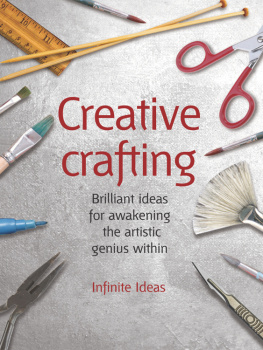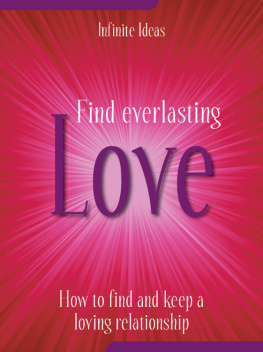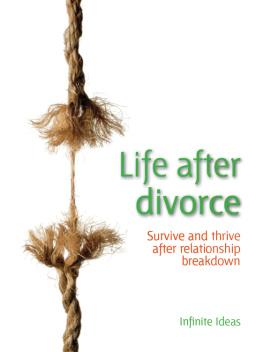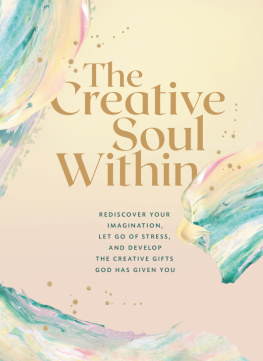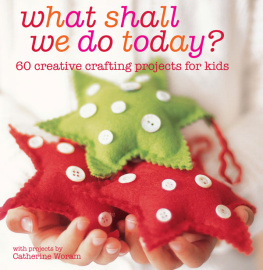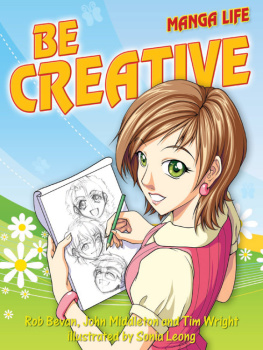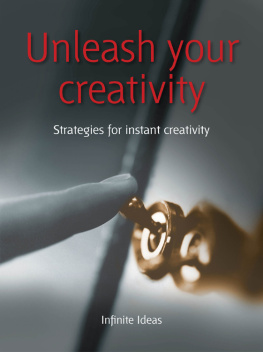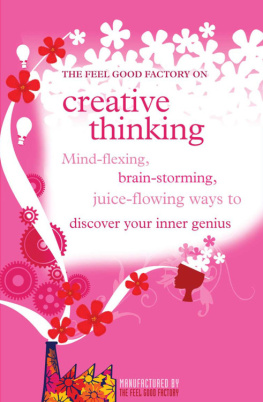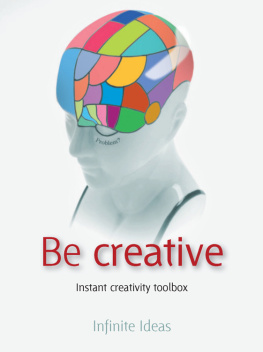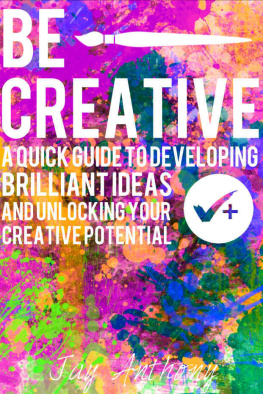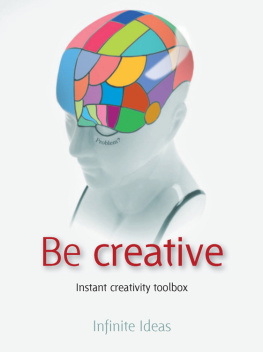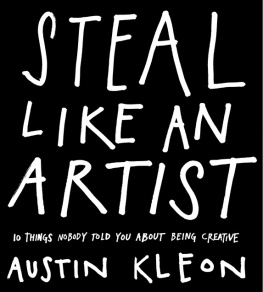7. Cartoon character in a carton
The human figure is always a challenge to draw or model its the shape we can most easily recognise and see flaws in! But heres a quick and easy way to create convincing three-dimensional caricatures from old plastic milk cartons.
The face is the feature we humans study most. We rely on it to know whether we are dealing with a friend or a foe, and what sort of a mood that friend or foe is in.
Although this profound intimacy with the feature can undermine your confidence in your ability to draw or model it correctly, at its most basic level it allows you to recognise that what youre seeing is indeed a face. Faces are what we tend to look for in any given jumbled mass of visual information, whether its a scribble on a notepad, the marks on a pebble or the tangle of leaves and branches in the tree in which we lose ourselves as we drift to sleep in a summer garden!
This is what cartoonists rely on our willingness to recognise facial features in the most distorted of representations. As a craftsperson, a designer-maker, you can capitalise on the human need to spot human likenesses by presenting abstract, stylised or even grotesque figures. This project probably falls into the latter category!
Plastic surgery
Start with an empty and rinsed plastic milk carton one of those ones with a looped handle built in near the top for you to hook your fingers through when carrying or pouring. A one- or two-litre container is ideal. Its important that it still has its screw-on top too.
Remove any labels and, with the top off, crush the carton vertically by pressing down onto it as it sits on a firm surface. To stop it re-expanding, put the top back on this prevents air from rushing back in as the plastic tries to straighten itself out. (This is the same technique you probably use to dispose of plastic bottles, as it minimises the amount of landfill each container occupies, but for the purposes of this exercise you dont need to crush the container too flat: about half-size is plenty.)
Now pick the container up and hold it with the screw top at the bottom and the handle towards you. Start looking! See the handle as the nose, and from that you should be able to identify eyes and forehead fairly easily, perhaps even a hairstyle or a hat. If nothing or no one leaps out at you yet, it may be that you have over-crushed; carefully unscrew the top to let a little air back in.
Placing the face
Now you can use paper parcel tape, or papier mch, to hold the face in shape, smooth out the wrinkles a little (taking care not to remove too much character in the process), block the gap behind the nose, and build up chin and ears if you want. Once the papier mch has dried, you can paint or otherwise decorate the surface, add hair, spectacles and so on as you see fit. Remove the screw top and mount the head on a pole or garden cane, which will make it easier to handle during the later stages of decoration.
As you gradually build the face up, you may be surprised at the character that starts to emerge. You may find yourself reminded of someone you already know, or you may be creating a brand new character, someone youve always wanted to meet or hope never to!
Heres an idea for you
Make a family group of bottleheads plastic cartons crushed to look like crumpled, characterful faces. It can be an imaginary family or a real one only you need to know! Cartons with handles for noses work best. Use various sizes, crushed to different degrees, and explore the different expressions and characters that emerge. Once youve spotted a face in a carton, use papier mch to build up the face and clarify the features. Paint when dry, and add hair as required. Take some holiday snaps of them in different locations, put them in an album, and ask yourself why Uncle Silas always looks so grumpy at family occasions!
Defining idea
A man finds room in the few square inches of the face for the traits of all his ancestors, for the expression of all his history, and his wants.
Ralph Waldo Emerson (180382), US poet and philosopher
How did it go?
Q. When I try to crush the carton, it just slips sideways. What can I do to stop that?
A. Yes, I found that when I started. Practice makes perfect, but meanwhile it can help if you stand the carton in a close-fitting container such as a bucket so that the base cant escape while youre pressing down.
Q. A head on a pole feels a bit disembodied! How can I make my head part of something more substantial?
A. Add a crosspiece or even a coat hanger to the cane at shoulder height. You can drape a cloak or other clothes to give your character a bit of body if you want. Clothes of course present another opportunity for expressing character (or disguising it), so choose your faces wardrobe wisely.
Q. No face wears the same expression all the time. Is there any way of animating my characters features?
A. The plastic of milk cartons is really too rigid to animate easily. An alternative would be to make several heads with similar features, although if your character relies on a particular crush-fold you might get through a lot of cartons! You could then use different heads for your character depending on their mood. This is quite a good opportunity to explore expression how tiny adjustments of eyebrows and mouth convey changes of mood and mind. There are other more subtle indicators too the tilt of the head, the directness of the gaze, how open the eyes are. Discover the tell-tale signs of feelings on a face.
8. Confused by colour? Get in a spin!
If you missed out on art classes at school, colour can be a baffling world. What do they mean by primary colours? How can colours have opposites? Painting yourself a colour wheel will help you understand, and provide you with a handy reference guide.
Colour is one of the many visual tools at the disposal of craftspeople, but too often we dismiss it as something that only painters need to understand.
Of course craftspeople use a lot of colour, and the choice tends to be a matter of our instinctive feel as creative people. But we think that the painters are the ones that mix colours, whereas crafts materials often come ready coloured. But colour, although very sensual, is also a science, and knowing the rules which govern it can at the very least explain to you why certain colours go with others, why some clash, and so on.
Its not rocket science or even bicycle science, and a few really simple circular colour charts are all it takes to demonstrate the relationships between (literally) all the colours of the rainbow. All you need are three pots or tubes of paint of the primary colours and a protractor (that semi-circular thing from your school geometry for measuring angles).
Primary things first
The three basic colours are yellow, blue and red. They are called the primary colours because you cant make them by mixing any other colours, and because from them you can mix any other colour. These colours are your starting point now.
First, draw two circles out on paper, one about 10cm in diameter, the other about 15cm. (You can use a compass it will help later if you can find the centre point or draw round any suitable round objects in the house, for example a saucer and a side plate.)
On the smaller circle, draw lines from the centre to divide it into three equal pizza slices; thats 120 per slice using your protractor. Going clockwise, paint one section yellow, one blue and one red. This is a primary colour wheel.

